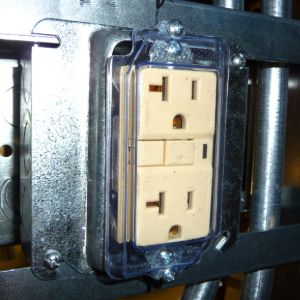How To Safely Store Electrical Equipment & Tools
Keeping electrical equipment and tools safely stored is crucial, especially in the construction industry, where power tools and materials present significant hazards. SmartGuard’s solutions provide reliable protection, helping to secure equipment while reducing risks associated with electricity and hazardous materials on a construction site. Implementing effective storage methods not only extends the lifespan of tools but also enhances job site safety.
Dangers Of Electrical Hazards
Electricity is essential but poses serious risks, including shock, electrocution, and equipment damage from circuit overloads. Recognizing these dangers highlights the need for proper safety measures, such as using protective gear like the 1 gang outlet cover, which prevents unintended contact with live electrical components.
Electrocution Prevention Strategies
Preventing electrocution is crucial on construction sites. An essential step involves educating workers about the safe handling and storage of electrical tools so they don’t electrocute themselves. Training should highlight the dangers of electricity, including the importance of the proper use of tools and recognizing signs of wear or damage. Ensuring all tools are adequately insulated and regularly checked for defects can also significantly reduce electrocution risks.
Safe Storage Of Electrical Tools
Proper storage of electrical tools is critical in minimizing risks. Tools must be stored in dry, temperature-controlled environments to prevent moisture-induced corrosion and damage. Storage units should be lockable to prevent unauthorized access and equipped with protective devices like surge protectors to guard against power spikes. An acrylic box for this purpose can be a good way to store electrical tools that need to stay on site.
Importance Of Using Protective Covers
Utilizing protective covers, such as the 4-gang outlet cover, is essential for safeguarding outlets and plugs from dust, moisture, and accidental contact. These covers provide a simple yet effective solution to enhance the safety of electrical installations, preventing potential hazards associated with exposed electrical components.
Ensuring Equipment Longevity Through Proper Maintenance
Regular maintenance extends the life of electrical equipment and tools. Establish a routine inspection schedule to identify potential issues early on, such as frayed wires or malfunctioning switches. Maintenance protocols should also involve cleaning and lubricating moving parts to ensure optimal performance and longevity of these tools.
Organizing Tools For Efficient Usage
Organization is key to work efficiency and safety. A systematic approach to storing tools ensures that they are easily accessible when needed and reduces the risk of accidental damage through inappropriate stacking or piling. Utilizing pegboards, labeled bins, and dedicated shelves can streamline access and prevent clutter.
Risk Assessment & Management
Conducting regular risk assessments is vital to identifying and mitigating potential hazards before they lead to incidents. Risk management involves evaluating the working environment, understanding the characteristics of materials and tools being used, and implementing strategies to minimize hazards.
Utilizing Technology For Safety Advances
Technology has revolutionized safety protocols with innovative solutions such as smart circuit breakers and remote monitoring systems. These technologies provide real-time data on electrical usage and can notify supervisors of any irregularities, enabling proactive safety measures. Covering them with a panel cover can ensure they stay clean and safe.
Addressing Storage Challenges In Challenging Environments
Storing electrical equipment in unpredictable weather requires additional precautions. Waterproof storage solutions and climate-controlled units can protect tools from moisture and temperature extremes. Portable storage units provide flexibility and protection when on-site conditions fluctuate. Consider the pros and cons of various storage methods:
- Tool Chests: Highly durable and secure but can be cumbersome to move.
- Shelf Storage: Easily accessible and organized but may lack security features.
- Wall Racks: Space-efficient and easy to organize but may expose tools to dust.
Implementing Safety Training & Features In Your Workplace
A culture of safety combines thorough training with integrated workplace safety features. Training covers handling procedures, protocols, and emergency preparedness, with regular updates. Essential safety systems like emergency shut-off switches, fire extinguishers, and safety signage enhance safety. Clearly marked pathways and visible protocols keep employees informed and proactive about security.
Common FAQs For Electrical Safety & Storage
Why Is Electrical Equipment Storage Important?
Proper storage prevents damage from environmental factors and unauthorized access, ensuring equipment safety and longevity.
How Often Should Tools Be Inspected?
Frequent inspections, ideally before each use, help identify defects or wear and enhance safety.
What Materials Should Be Avoided Near Electrical Tools?
Avoid storing electrical tools near flammable materials, which can amplify the risk of fire due to power surges or faulty wiring.
What Should Be Done In Case of An Electrical Accident?
Immediately disconnect power sources and seek emergency medical assistance. Ensuring team members are trained in basic first aid can also be life-saving.
Prioritize Your Electrical Safety With SmartGuard
At SmartGuard, we understand the importance of electrical safety in the construction industry. By implementing the safety strategies and storage solutions outlined in this guide, you can significantly reduce hazards and improve workplace efficiency. Ensure your equipment’s longevity and the safety of your team by making informed choices today. Secure your tools and invest in safety measures that protect your team nationwide.

